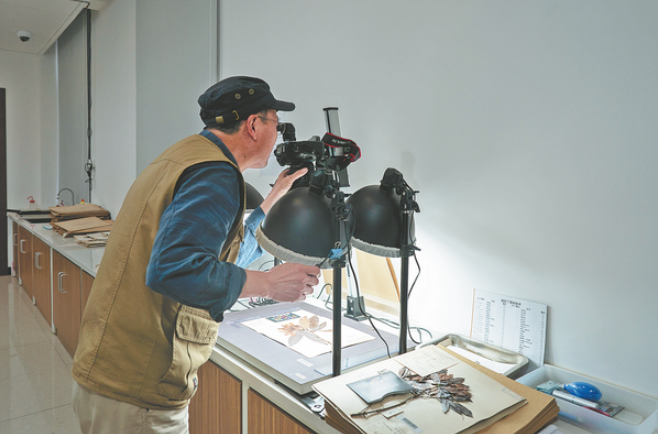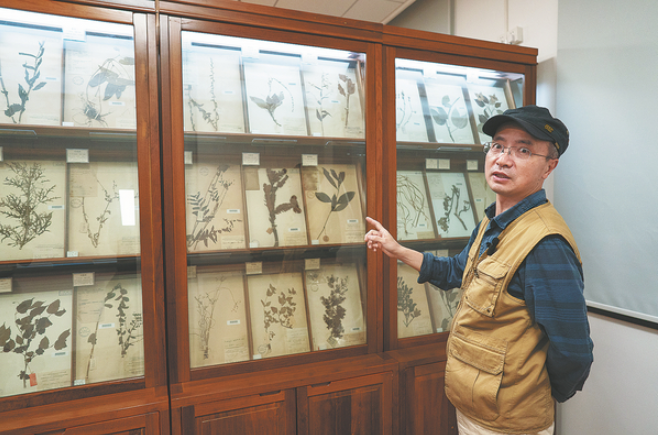今日上海
保护植物标本的特殊召唤 - 2023年07月24日
A specific calling to protect plant specimens

Lu Fan has been the director of the herbarium of Zujia Biological Museum for the past 36 years.
At the herbarium of Zujia Biological Museum in Shanghai, where plant specimens are kept, plant taxonomist Lu Fan is working around the clock to record the tens of thousands of specimens digitally.
"I still have three years before retirement. I plan to organize these specimens again, take the most complete specimen of each species and digitalize them," says Lu, the director of the herbarium for the past 36 years.
In the past four decades, Lu has been accompanied by the nearly 90,000 specimens that have been collected by scholars and experts over the past century.
According to Lu, the establishment of the herbarium was related to Qian Chongshu, one of the founders of modern botany in China who served as the dean of the School of Agriculture at Fudan University in 1945.
Started from dried plants collected by Qian, the herbarium of the Department of Biology at Fudan University was officially established in 1951.
Afterwards, a group of scholars and professors began their work on plant identification and classification. Large-scale specimen collection and field teaching were also carried out in the eastern China region.
"The original herbarium was just a small attic, and it has gradually grown to its current size," says Lu.

Lu Fan has been the director of the herbarium of Zujia Biological Museum for the past 36 years.
The number of specimens has expanded from around 10,000 initially, to more than 90,000, including over 7,000 European specimens, as well as the nearly 10,000 specimens that were collected from the Tibet autonomous region and other northwestern regions in China by noted botanist, the late Zhong Yang.
The herbarium also contains specimens which were collected by scholars from Europe and brought to China by French missionaries before 1920, Lu says.
"The preciousness of plant specimens depends on three factors: the collector, whether the plant itself is protected, and whether it is a type specimen," Lu explains.
He adds that the herbarium has 112 type specimens of more than 80 kinds, which serve as the basis for comparison with other specimens in determining whether they are members of the same species or not.
"Besides being an important basis for the publication of a new species, the diversity of specimens you have illustrates the academic status of the university or institution," Lu says.
Despite his efforts, what worries Lu most is that, with the development of science and technology, traditional taxonomy is no longer as highly valued as in the past.
"From the 1950s to the mid-1980s, traditional taxonomy still had a strong influence and was able to attract many people to the discipline. But while many disciplines and research methods have constantly evolved and developed since the 1990s, taxonomy was relatively neglected," Lu says.
In his eyes, although the academic value of those plant specimens has ended after thorough study, their historical value is long-lasting because they document "a period of history at that time and a development process of modern Chinese botany, especially plant taxonomy".
Lu admits that he feels obligated to preserve these precious records that were passed down by his predecessors. After the opening of the museum in 2018 following a period of renovation, all of these plant specimens were reorganized and redisplayed.
"I hope that, perhaps 30 years from now, when other people go through these specimens again, they can still appreciate the high quality of these records," he adds.
Source: China Daily
